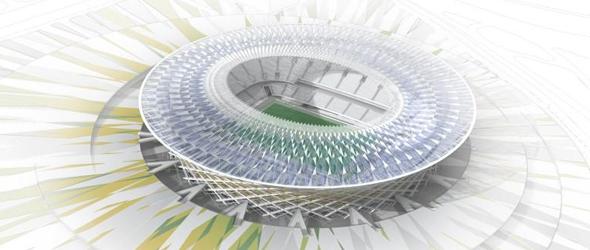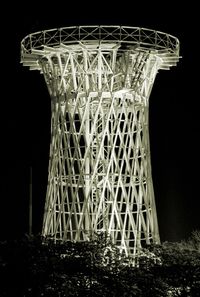Russia: Krasnodar didn’t want restaurants and pubs inside their 2018 stadium
source: stadiumdevelopmentrussia.com; author: michał
 In an interview with “Construction IQ” HKS principal Paul Hyett explains the ideas behind World Cup stadium for Krasnodar. Interestingly, investors didn’t want extensive commercial infrastructure, just like they disapproved of parking lots surrounding the ground.
In an interview with “Construction IQ” HKS principal Paul Hyett explains the ideas behind World Cup stadium for Krasnodar. Interestingly, investors didn’t want extensive commercial infrastructure, just like they disapproved of parking lots surrounding the ground.
Advertisement
During his visit to London Paul Hyett, principal of renowned HKS Architects took a while to talk to “Construction IQ” and “Host City Magazine”. Mostly about general trends in today’s stadia, but with one specifically in mind – the new Krasnodar stadium that awaits construction ahead of 2018 World Cup.
They want it big
With all the talk about sustainability and demountable structures Krasnodar’s decision to have one of the biggest stadiums of the 2018 tournament seems like a courageous one. Especially that largest football side Kuban isn’t a powerhouse of the Russian Primer Liga. Or not yet, at least. That building will be, in its legacy mode, adopted by one of the two local clubs in Krasnodar. So that will become a club pitch, and they do not want to reduce the size of it at all. That's 50,000 seats. They'll take 50,000 seats. They're very happy. They're one of the two teams in that city which are in the Russian Premier League, so they're very happy with that. End of story
, says Hyett.

But no restaurants and parking lots
HKS official goes on to explain why the Russian side didn’t want the ground to be packed with commercial spaces or surrounded by parking lots.
We're put a bowl in it which we think is very appropriate to the needs of a club in legacy, so I think that will be very effective. Not so much in the way of concessions, restaurants, bars as we would normally do because the city authorities there have been anxious about a couple of things. One is not to encourage too much use of the building for that because they've got businesses, restaurants and bars around in the streets which they want to keep alive. So they see the building as being very much integrated into the urban fabric. Not unlike Cardiff Millennium Stadium which is located deep in Cardiff, and I'm told... I didn't do that building. We weren't involved in that plan. I'm Welsh so l like it. I'm told that the city authorities there were quite anxious that there would be a balance between the refreshments, food, concessions that could be brought inside the building and an encouragement of the spectators to use local bars, hostelries, restaurants on the way to and from because the building is bedded in the city which I think is a marvellous idea. So we've respected that
, said Hyett.
The other thing I suppose it's worth just mentioning, which was a big issue with that building was that it demonstrates a great difference in thinking between an American model and a Russian model, is that Dallas Cowboys, which we did, which is the world's largest stadium, the external landscaping has had enormous sums of money spent on it but it is actually, I'll be careful how I say this and try and say it nicely, it's a big car park, as far as we're concerned in Europe. It's a big car park. But the Americans are very interesting and amusing people. […] And they park them around and they've all got burners on the back for doing BBQs and they have a great party. This is a great social thing and they love it. Who would discourage that? […] We're told in Russia: forget it. Out of the question. Totally unacceptable. We won't have it. Don't want cars parked around the building at all because they are very committed to good quality public urban landscape, so in order to park the cars, we actually had to build a ramp up. What we did instead of digging down, which is very expensive, we built a ramped podium the whole way around the building. We've got between two and three storeys of car parking under the podium. The podium goes three storeys up the building, and that ramped podium we've landscaped with parkland which is very much in the model of the Russians
, the architect explains.
Visual side
Initial press releases said the form of the ground takes from sunflower, the region’s symbol. That may be, but Hyett has a different story to tell about it.

Krasnodar is a very interesting part of the southern area just on the edges of the Black Sea, and in that city there were some pretty interesting clues for us, and amongst them was an old water tower (photo left) that looked as if it had been built... it was on a circular structure, almost like a Russian constructivist model, and we took that as a theme and picked it up, and we actually wrapped a building in that and it's actually designed to have panels the whole way round it. Each of them operate slightly separately, almost like fins on a fish, so that we can actually produce an open building to allow the movement of air through there because in winter, as I said, it is very cold. In summer, it is actually breathlessly hot. The air is extremely still, so by opening the panels you can get a natural movement of air through the building, and as soon as you do that you get a chill factor on the air and people feel automatically more conformable
, he says.
Advertisement

 StadiumDB
StadiumDB